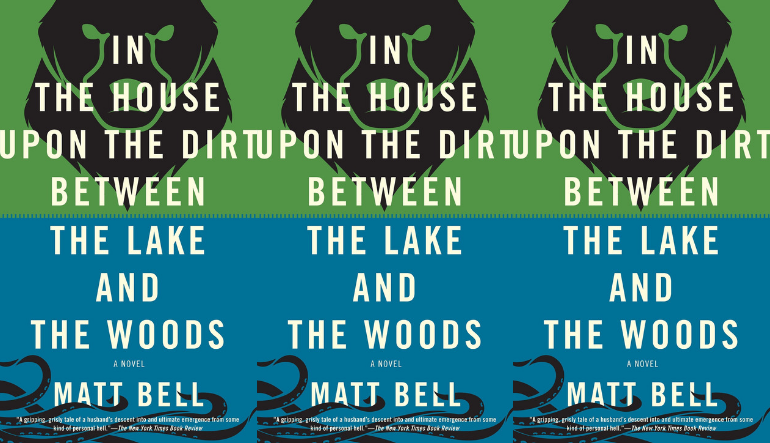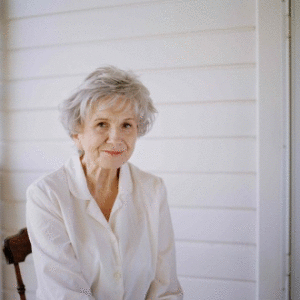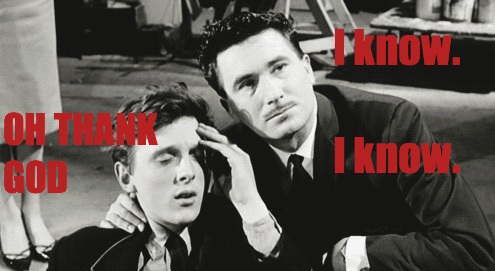The Books We Teach #1: Interview with Matt Bell

The Books We Teach series will feature primary, secondary, and post-secondary educators and their thoughts about literature in the face of an evolving classroom. Posts will highlight literary innovations in teaching, contemporary literature’s place in pedagogy, and the books that writers teach. In the spirit of educational dynamism, we encourage readers to contribute their thoughts in the comments section.
Matt Bell’s debut novel In the House upon the Dirt between the Lake and the Woods will be published by Soho Press in June 2013. He is the author of Cataclysm Baby, a novella, and How They Were Found, a collection of fiction. He is the Senior Editor at Dzanc Books, where he edits the literary magazine The Collagist. He teaches creative writing at Northern Michigan University.
Matt was kind enough to chat with me about what he’s teaching at NMU, why he’s teaching it, and how his writing and teaching lives inform each other.
Tell me a little about the classes you’re teaching this term. Within these curricula, are you looking forward to teaching any works in particular?
I’m teaching two classes this semester, a 300-level fiction workshop and a 400-level advanced workshop. In the 300-level workshop, I’m teaching The Anchor Book of New American Stories (edited by Ben Marcus), Jerome Stern’s Making Shapely Fiction, and a coursepack of stories and essays by Amelia Gray, Don DeLillo, Gary Lutz, Brian Evenson, Jonathan Lethem, Edouard Leve, Stanley Elkin, Neil Gaiman, Lindsay Hunter, Norman Lock, Blake Butler, Karen Russell, Deb Olin Unferth, Robert Lopez, Denis Johnson, Mike Meginnis, Laura van den Berg, Anne Valente, Ander Monson, and Daniel Long.
In the advanced workshop, I’m teaching a craft essay each week from Tin House’s The Writer’s Notebook, plus stories from a coursepack including Donald Ray Pollock, Mary Miller, George Saunders, Gary Amdahl, Kelly Link, Ander Monson, Roxane Gay, Brian Evenson, Charles Yu, Ryan Call, Matthew Derby, William Walsh, Denis Johnson, Aimee Bender, Jonathan Lethem, Don DeLillo, Amanda Davis, Dylan Landis, Raymond Carver, Mima Simíc, Roy Kesey, Tina May Hall, Alexandra Chasin, Ben Marcus, Peter Markus, Diane Williams, Kate Bernheimer, Etgar Keret, and Ben Loory. Each student is also responsible for bringing in an issue of a different literary magazine, giving a presentation on the magazine, and sharing some of its content with the class.
I’m pretty excited about all of the above, but there’s a lot of work here I’ve never taught before, which makes for a different kind of excitement. At the same time, I’m teaching some of the same writers in my advanced class that I taught in the earlier course, and even this early in the semester I’ve been thrilled to see how continuing students respond more fully to this second exposure, often even to writers they were lukewarm about last semester. I throw a lot of new work at the writers in my courses, many styles of writing they’ve never seen before—not very many students come on their own to Wenderoth’s Letters to Wendy’s, for instance, and almost none of them have yet thought to try some of what Anne Carson or Ander Monson or Norman Lock are doing—and it takes time and space to sort through all that newness.
What draws you to a text, pedagogically speaking? Do any works come to mind that are as enjoyable to teach as they are to read?
It’s probably reasonably obvious from the lists above that I’m teaching a lot of writers known for their unique and powerful writing styles. With undergrad students, I try to find a wide range of different ways to tell the story—this is why I often start students off with the Anchor book, wherein Marcus explicitly gathers twenty-nine styles he finds successful—in the hopes that students will find a number of models or inspirations to work from in their own writing, and to move forward from in their reading as they build their personal canon. I find that the solutions to my problems as a writer are often found in works very dissimilar to what I’m working on, which means it’s worth continuing to widen the scope of my reading and that of my students.
One of my favorite texts to teach is Gary Lutz’s essay “The Sentence is a Lonely Place.” I couldn’t imagine not exposing students to this piece. After reading it, we spend a day considering sentence after sentence on the projector, all kinds of successful ways to get from the opening word to the final punctuation, how the sentences are built, where the power comes from, and what kind of rules we can extract about what creates emotional effect on the sentence level. It’s my experience that fiction writers—and not just beginning fiction writers—have a lousy vocabulary for talking about sentence-level acoustics and poetics, and while there’s more to learn than we could ever cover in a single lecture, I think it’s important to open that area of inquiry as early as possible. There’s almost no easier or more provocative point of entry than “The Sentence is a Lonely Place.”
Is there something brand-spanking new that you are teaching? Can we hear a bit about the work and why you’ve chosen to teach it?
When I came to Northern Michigan University, I decided to start every semester by having students read a story that takes place in our shared place, our shared time—and so this semester we read Ander Monson’s “Other Electricities” in my intro workshop and Roxane Gay’s “North Country” in my advanced workshop. I think it’s important to demonstrate that innovative, progressive fiction can be written about this place we live in together—where many of my students have lived their whole lives. So much of what we’re going to read is about other kinds of people living in other places, and there’s so much worth in that—the great project of empathy that fiction is engaged in doesn’t work if we don’t read about others—but as writers I think students also need to see what contemporary fiction might do with their hometowns. The first sources my students have are their own lives (not to mention the magnificent landscape of the Upper Peninsula). While they don’t have to write about those things, I do want to make sure they know their surroundings are a powerful option—something I don’t think I knew when I was a student of the same age, when I thought stories were always something that happened out past the bounds of my personal world.
When you read and write do you often find yourself thinking as a teacher? Do you find this state a hindrance or a welcome perspective? Both?
I wouldn’t say I think as a teacher a lot when I’m writing, although my teaching does sometimes help me as a writer; there are often solutions to my own problems that come up during workshop or in our craft readings or the stories we’re discussing. Through facilitating and contributing to discussion, I’m also a participant in workshop, and so I get a lot of the same benefits my students do from the process of critiquing one another’s work.
So many of my additions to the course material come directly from my outside reading: I don’t necessarily see them immediately as I’m reading, but often something said in class will remind me of a novel I’m reading or an interview I listened to or a craft essay I’ve been thinking about. Constant reading makes me a better writer, even if there’s not a direct correlation of the books I’m reading to the book I’m writing; constant reading, too, makes me a better teacher, even if the relationship is not always intentional.
Could you talk to me a little about one text (a book or a piece) that elicited a wholly positive response from your students? What about this book/piece caused such collective enthusiasm, do you think?
One of the best class discussions we had last semester was about Stanley Elkin’s “A Poetics for Bullies,” which one of my sections seemed to almost unanimously love, but not for all the same reasons. Toward the end of our close reading, the discussion erupted into a heated but friendly argument about how both Push and John Williams were bullies in their own ways—one through his hate, one through his love—and over which it was better to be bullied by. In the wonderful moroseness of writing students, they mostly identified with Push, but there were a few students who stood up for John Williams’s bullying sort of love. It was a blast listening to the students all scouring the text for evidence while almost effortlessly exploring the extraordinary complexity of Elkin’s story, the way he complicates and contradicts the story’s morality, the places in the text where he makes us complicit in the framing and judgment of the story’s events.
Is there a text that you were taught as a student that you now teach as a teacher?
I teach a lot more contemporary lit than I was taught as a student, and so there isn’t necessarily a ton of crossover; with a few exceptions, I teach almost nothing I was taught (but almost everything I teach is something I was taught by, if that makes sense). I am teaching Raymond Carver’s “Cathedral” this semester, which I was taught many times of course, and which I’m teaching both because of its own accomplishments but also because it’s referenced in another story I teach, Mima Simíc’s “My Girlfriend.” I’ve never taught “Cathedral” before, and now it occurs to me that it seems almost like a rite of passage to do so, because it’s one of those stories every writer seems to know and has studied, like “Hills Like White Elephants” or “The Cemetery Where Al Jolson is Buried,” and probably ever teacher has to teach it eventually. I’m excited to give it my first best try later this semester.
Sometimes—as if by magic—we find the perfect grouping of stories to teach as a unit. Can you recall a unit of which you’re particularly fond? What makes these stories fit so perfectly together?
One combination I was particularly happy with this past semester (and that I’ll be teaching again in a few weeks) is the pairing of Brian Evenson’s story “Two Brothers” (which is collected in the Anchor book) with the title story of his new collection, Windeye. The first time I taught “Two Brothers“—in a 200-level Craft of Fiction class when I was a grad student at Bowling Green—it went over kind of rough. Students struggled with its subject—there’s a lot of religious material they found discomfiting, a good bit of violence, and both explicit and implied moments of incest—as well as with its ambiguity and unconventional structure. We eventually had a good discussion about the story, but it wasn’t ideal, and I didn’t feel like students were able to see everything I wanted them to.
Last semester, I decided to pair it with “Windeye,” which is shorter and lacks the most controversial subject matter found in “Two Brothers,” but otherwise shares a lot of elements: there’s a pair of siblings, a house that is possibly shifting in shape, and so on, plus its engine runs on some really finely built ambiguity. We read the stories for the same class period, but discussed “Windeye” first, then used that discussion as a key to more successfully unlock “Two Brothers.” At the end of the semester, my students write an annotated bibliography essay where they have to write about the ten stories from the semester that influenced them the most, and nearly every single student in my workshops wrote glowingly about these two Evenson stories. There was always a lot for them to see in “Two Brothers,” but I think I needed something to get them over their initial resistance to how different it was from what they were used to—and I kind of love that I found that something in Brian’s other works.
Your new book In the House upon the Dirt between the Lake and the Woods feels, in many ways, teachable. That is to say—the novel has an impressive wealth to share with its reader and the reader, thus, has much to dissect; it’s a gorgeous, bottomless book. When you were writing it, did any pedagogical musings come into play?
Thank you so much for the kind words about the book. It means a lot to me that you enjoyed it so much. I don’t think there were any directly pedagogical musings that factored into its writing, but I wasn’t a teacher most of the time I was working on it, so maybe that wouldn’t have occurred to me anyway. I started it just as I was finishing grad school, and through most of the primary writing on the book I was working as an editor at Dzanc.
That’s not a very revealing answer, so let me offer this instead: there was a long version of the novel that was at least two hundred pages longer than the final book and much less reader-friendly, a version that on reflection I know I arrived at partly out of a want to make something impressive, something that would prove I was capable of writing a certain kind of novel. I think it was, in that form, the kind of book that revealed the author’s own need to be taken seriously in a way that could have destroyed anything else good about it. What remains—after the helpful intervention of friends and my great editor at Soho, Mark Doten—is a massively better book, one that I think serves the reader instead of the writer.
So here’s your pedagogical musing, something I try to share with my students, something that I often have to reaffirm for myself: it’s my belief that the drafting process is and must be for the writer first, and if she believes this, the process will give her everything she desires (and much that she don’t know she desires), as long as she does the work diligently, honestly, and with a powerful form of attention each time she sits down to manifest herself upon the page. But there will come a point in the writing when what the fiction needs most is for the writer to stop serving herself. She must then make a turn toward the reader, with the aim of better translating that experience into a space in which a reader might act, feel, and think on her own. Because in the end, the published book has to serve the reader, not the writer.
This doesn’t mean the book can’t be difficult—only that the difficulty has to serve the reader first. It’s a violation of the contract for it to do anything else. This part of the process is what finally requires great humility and mercilessness: to allow no cheap cleverness or false grandeur or fake emotion to remain in the final book, to cut the thing down to the bone, to leave behind only what is strongest, what does the best work. Or as Francine Prose says, in her essay “Close Reading”—which I always teach on the first day of my intro workshops—”to put every word on trial for its life.” That’s the path to greatness. One of the best things we can do for one another in a workshop is to point out where in our manuscripts that path might lie, and then to hold each writer accountable for sticking to it the whole way home.

